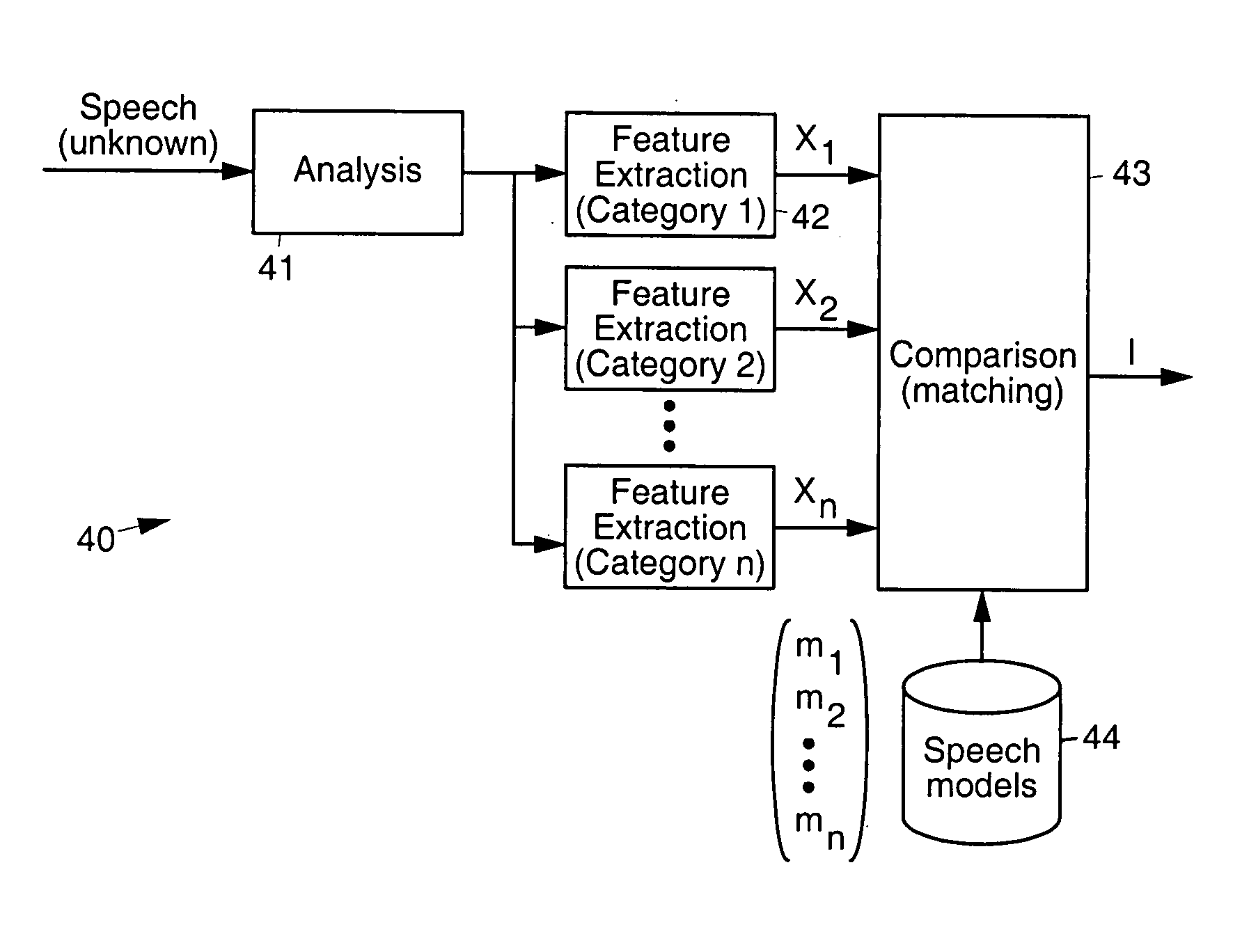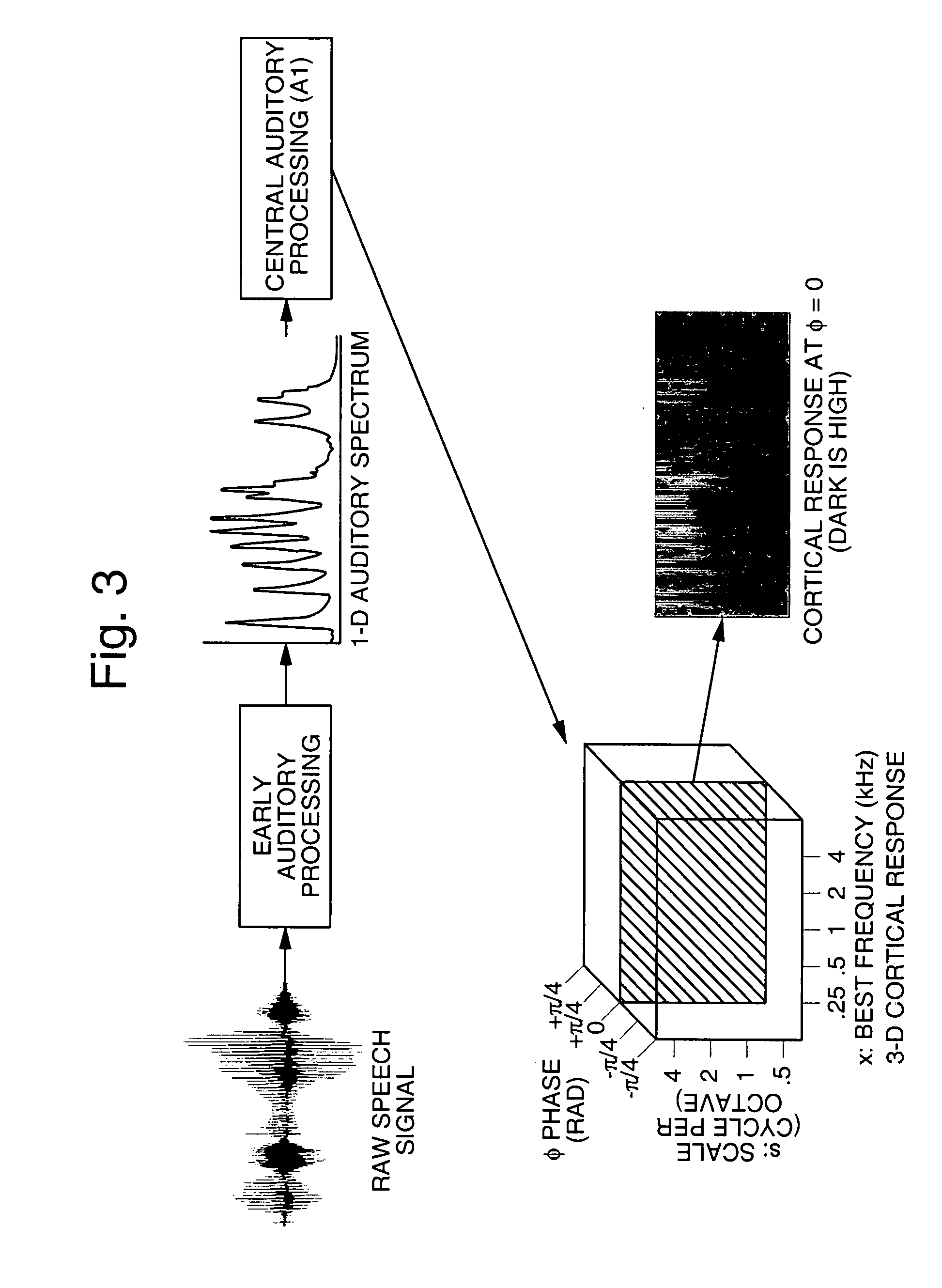Automatic pattern recognition using category dependent feature selection
a feature selection and automatic pattern recognition technology, applied in the field of pattern recognition apparatus and methods, can solve problems such as front-end processing methods
- Summary
- Abstract
- Description
- Claims
- Application Information
AI Technical Summary
Benefits of technology
Problems solved by technology
Method used
Image
Examples
Embodiment Construction
[0016]Disclosed herein are pattern recognition apparatus and methods that utilize a dimension-expanded cortical response model as a representation of auditory signals. Apparatus and methods are also disclosed that provide for automatic pattern recognition using category dependent feature selection.
[0017]First, a description will be provided discussing an auditory model used in an implementation of the invention. The model has been validated under a conventional recognition framework by deriving speech features from the model and applying them to a phoneme recognition task. It has been found that the dimension-expanded cortical response is capable of providing speech features that are comparable to the MFCC in terms of recognition accuracy.
[0018]Next, a more new model of cognition and perception will be described that is based on observations of the auditory model that go beyond conventional methods of automatic speech recognition. By studying the dimension-expanded cortical response...
PUM
 Login to View More
Login to View More Abstract
Description
Claims
Application Information
 Login to View More
Login to View More - R&D
- Intellectual Property
- Life Sciences
- Materials
- Tech Scout
- Unparalleled Data Quality
- Higher Quality Content
- 60% Fewer Hallucinations
Browse by: Latest US Patents, China's latest patents, Technical Efficacy Thesaurus, Application Domain, Technology Topic, Popular Technical Reports.
© 2025 PatSnap. All rights reserved.Legal|Privacy policy|Modern Slavery Act Transparency Statement|Sitemap|About US| Contact US: help@patsnap.com



